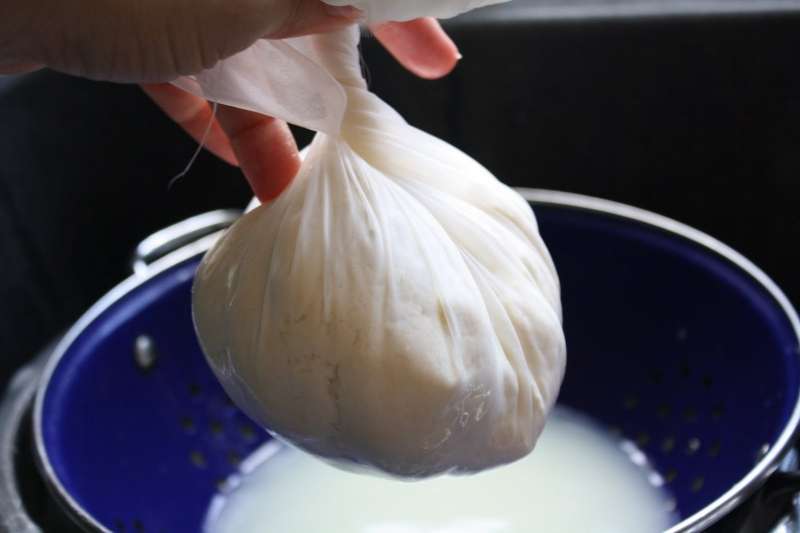Whey
Health Benefits of Whey
Whey proteins help to grow your muscles, maintain your bone health, and manage your weight. Whey contains a number of supportive factors, including lactoferrin, which can be beneficial for tissue recovery from metabolic stress resulting from illness, surgery, or chemotherapy. Serum minerals such as calcium, phosphorus and magnesium support bone growth and protect your bones. Whey proteins are also useful for bone diseases. In addition, GMP promotes the release of cholecystokinin. However, researches are needed to determine whether GMP in foods increases the feeling of satiety and whether it plays a role in weight control. (Takada et al., 1997, Anonym 1998, German et al., 2001) [Karagozlu and Bayarer 2004].
Dairy products like whey protein can be beneficial for infants, the elderly, the sick, and athletes. However, more researches about it are needed on the human health benefits.
The importance of whey proteins in special diets
The biological activities of whey proteins are used in patients with acute and chronic diseases. Immunoglobulins, lactoglobulins, and serum albumin can be useful for patients with cancer or AIDS because of their ability to increase immunity. In addition, short chain amino acids found in whey proteins are used by muscles for energy needs during stressful situations and are important for people who are poorly nourished or on a low protein diet - e.g. the last stage of kidney disease (Almults and German 2001, Karagözlü and Bayarer 2004).
Short chain amino acids in whey proteins are useful for athletes as they help minimize muscle breakdown in situations where continuous vigorous exercise (e.g. marathon) increases protein catabolism. Another study shows that 16 athletes who eat special foods made from whey proteins that are rich in short-chain amino acids for 21 days prevented body weight and muscle loss. (Almults and German 2001, Karagözlü and Bayarer 2004).
It has been found that hydrolyzed protein based whey protein based formulations are useful for infants with a cow's milk protein intolerance. Also, intensely hydrated whey formulations can reduce infantile colic crying. De wit 1998, Harper 2000, German et all. 2001, Karagözlü and Bayarer 2004).
Studies on the possibilities of using protein-containing whey fractions, which are rich in specific proteins such as lactoferrin, in infant formula are still being researched. It is well known that lactoferrin, the main whey protein in breast milk, is contained in smaller amounts in cow's milk (Almults and German 2001, Karagözlü and Bayarer 2004).
Antibacterial and antiviral properties of whey
Lactoferrin, which is taken with food, is known to be effective against bacteria, viruses and fungi (pathogens). For example, it has been shown that lactoferrin protects against pathogens such as haemophilus influenza, which causes otitis media in children. The antimicrobial effects of lactoferrin are primarily related to iron transport activity, but recent studies show that antimicrobial activity is free iron. Lactoferrin directly damages the system like its peptide fragment lactoferricin (lactoferricin B) and changes the permeability of the gram-negative bacterium from the cell membrane. Thus, microbial cells lose their integrity and die. It has been shown that lactoferrin is positive in at least one adult (Tome 1999, Harper 2000, German et al. 2001, Karagözlü and Bayarer 2004).
Support of the immune system
Temporary changes in the immune system can increase the risk of infections and cancer, as well as worsening your existing health conditions. Cell culture researches and in vivo researches on animal have shown that whey proteins enhance the specific and non-specific immune response (Wong et all. 1995, Anonymous 1998, German et all. 2001, Karagözlü and Bayarer 2004).
Antioxidant effect
Whey proteins, which support antioxidant functions, help reduce the risk of many diseases such as cancer and arteriosclerosis. Whey proteins are high in cysteine and glutamate, which help reduce stress. Glutathione levels are higher in all animals fed whey protein than those fed meat or soy. Any whey protein, such as lactoferrin, inhibits oxidation by removing the free iron, thereby limiting the ability of certain compounds to catalyze oxidative reactions (Anonymous 1998, Parodi 1998, Harper, 2000, German et all. 2001, Karagözlü and Bayarer 2004).
Anti-carcinogenic activities
It is reported that whey proteins protect against some types of cancer. Another research related to this topic shows that colon tumor formation in the whey protein-fed guinea pigs remained at a lower level than the group fed with casein, meat or soy proteins (Parodi 1998, German et all. 2001, Karagözlü and Bayarer 2004).
All whey proteins show an anti-carcinogenic effect. For example, when laktalbumin is incubated with two different mammalian intestinal cells, cell division is reduced. However, the effect of casein fermentation peptides on cell division has not been observed. Lactoferrin has also been reported to be effective in protecting certain types of cancer (Karagözlü and Bayarer 2004).
Hypocholesterolemic effect
The effects of whey protein and casein on plasma and liver cholesterol concentrations were studied in newly weaned rat fed a diet containing cholesterol for 3 weeks. A significant decrease in plasma and liver cholesterol levels has been observed with the ingestion of whey proteins (Zhang and Beynen 1993, Karagözlü and Bayarer 2004).
References
Cem KARAGÖZLÜ 1 Mine BAYARER2, 2004 Peyniralti Suyu Proteinlerinin Fonksiyonel Özellikleri ve Saglik Üzerine Etkileri, Ege Üniv. Ziraat Fak. Derg., 2004, 41 (2):197-207 ISSN 1018-8851
Takada Y., H. Matsuyama, K. Kato, N. Kobayashi, J. Yamamura, M. Yahiro and S. Aoe 1997. Milk Whey Protein Enhances The Bone Breaking Force in Ovariectomized Rats, Nutrition Research 17: 1709-1720.
Anonym 1998, International Dairy Federation. Whey. Proceedings of the Second International Whey Conference, Chicago, USA, 27-29 October 1997. International Dairy Federation ,Brussels, Belgium.
German, J.B., C.J. Dillard and R.L. Walzem. 2001. U.S. Whey Products and Dairy Ingredients for Health: A Review. May 2000. U.S. Dairy Export Council.
Almults, W.R. and J.B. German. 2001. Health Enhancing Properties of Dairy Ingredients. Dairy Council Digest 72 (12) 7 - 12.
De Wit, J.N. 1998. Nutrional and functional characteristics of whey proteins in food products. Journal of Dairy Science 81: 597.
Harper, W.J. 2000. Biological Properties of Whey Components. A Review. Chicago, IL: The American Dairy Products Institute, 2000.
Tome D. 1998. Bioactive Peptides and Proteins From Milk-Potential Health Benefits. In: Proceedings of the 25th International Dairy Congress; Sep 21-24, 1998. Rarn A (ed.), pp 163-80. The Danish National Committee of the IDF, Aarhus, Denmark.
Wong, C.W. and D.L. Watson. 1995. Immunomodulatory Effects Of Dietary Whey Proteins In Mice. Journal of Dairy Research 62 : 359 – 368.
Zhang, X. and A.C. Beynen. 1993. Lowering Effects Of dietary Milk-Whey Protein Versus Casein on Plasmaand Liver Cholesterol Concentrations In Rats. British Journal of Nutrition. 70 : 139-146.
Ganjam, L.S., W.H. Thornton, Jr., R.T. Marshall and R.S. MacDonald. 1997. Antiproliferative Effects Of Yogurt Fractions Obtained by Membrane Dialysis on Cultured Mammalian Intestinal Cells Journal of Dairy Science 80: 2325 - 2329.
Parodi PW.1998. A Role For Milk Proteins in Cancer Prevention. Australian Journal of Dairy Technology 53:37-42













